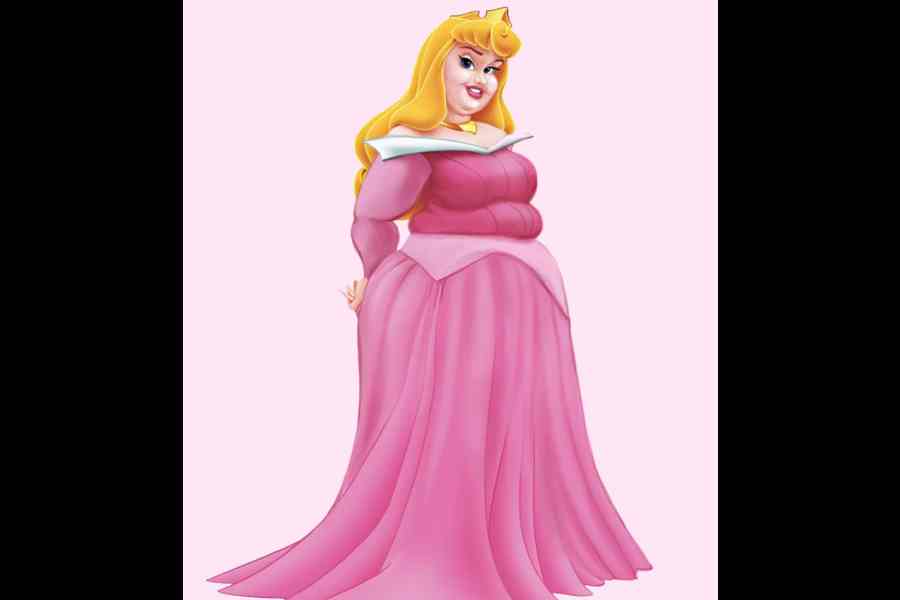It may not have been... cough, cough... the handsome prince alone who took Cinderella’s breath away at the ball.
Several princesses and heroines from fairytales and Walt Disney movies, including Cinderella, Aurora and Snow White, would have in real life faced serious health risks, scientists have said in a rigorous but light-hearted research paper.
Aurora, the protagonist in The Sleeping Beauty, would through her prolonged sleep, for instance, face the risk of cardiovascular disease, obesity, pressure ulcers and muscle atrophy, researchers from the University of Twente in the Netherlands have said
in a paper to be published this week.
“Disney princesses face serious real-world health hazards. Surprisingly, despite these risks, they seem to live happily ever after,” Sanne H.B. van Dijk and her co-authors Michael Bui and Anouk Ekjelboom said in the Christmas issue of The British Medical Journal (BMJ).
The journal has maintained a tradition of publishing an annual Christmas issue containing a mix of quirky and light-hearted commentaries and peer-reviewed original research, all treated with the same rigour as “real scientific papers”.
Cinderella, living with a cold-hearted stepmother and two stepsisters and forced into household chores, would be exposed to dust from cleaning and chimney sweeping, raising her risk of occupational lung disease, the researchers have said.
And Cinderella’s fairy godmother spreads massive quantities of magical glitter — otherwise known as aluminium-coated microplastics — which could exacerbate the occupational lung disease.
“Rather than a prince, Cinderella needs ongoing respiratory therapy to live happily ever after,” they wrote.
In Beauty and the Beast, Belle offers herself as a captive to free her father who has been taken prisoner by the Beast and locked in a dungeon. The film depicts the beast as a creature with a buffalo head and gorilla eyebrows, a wild boar’s tusks, a bear’s arms and body, and a wolf’s legs and tail.
“The Beast is thus a chimera, an entity composed of cells of different organisms,” van Dijk and her co-authors wrote in their paper. “Close contact with the Beast exposes Belle to potentially life-threatening infectious diseases such as brucellosis and rabies.”
Snow White, serving as a scullery maid for her stepmother with extremely limited opportunities for social interactions, would face enhanced risks of anxiety, depression, cardiovascular disease and premature mortality, the researchers said, citing a medical review on the health impacts of social isolation.
Jasmine, the princess in the tale of Aladdin, is also exposed to social isolation and the risks of mental health problems, anxiety, depression and an impaired immune system.
Medical reviews have established that prolonged bed rest increases the risk of pressure ulcers, muscle atrophy that gets worse over time, and obesity, stroke and diabetes, the researchers said, outlining the risks faced by Aurora in The Sleeping Beauty, condemned to sleep until she is woken by true love’s kiss.
Although a prince arrives and breaks the sleeping spell, the researchers noted that the prince would have violated current social norms by neglecting to obtain consent.
“We chose to focus on the Disney princesses as their movies are both beloved within our team and well-known worldwide, making them a great subject to connect with a broad audience,” van Dijk said.
Bui said the idea of analysing the health risks of the princesses emerged after they reviewed earlier issues of the BMJ Christmas edition.
“We liked the concept of satirically over-analysing popular media such as movies or games, a refreshing change from formal research,” Bui told The Telegraph.
In the story of Pocahontas, her hand-first dive off a cliff lasts nine seconds. Taking into account an average woman’s height of 1.62m, weight of 62kg, air density and gravitational acceleration, the cliff height is estimated at 252m.
Diving dynamics studies suggest that a hand-first dive from just 12m would lead to clavicular compression — a condition where the collar bone is compressed against the first rib. Pocahontas’s dive would have left her with “a symphony of fractures”, the researchers said.
And Rapunzel’s 21-metre-long braid, when used as a cable, would expose her to the risk of damaged hair follicles.











